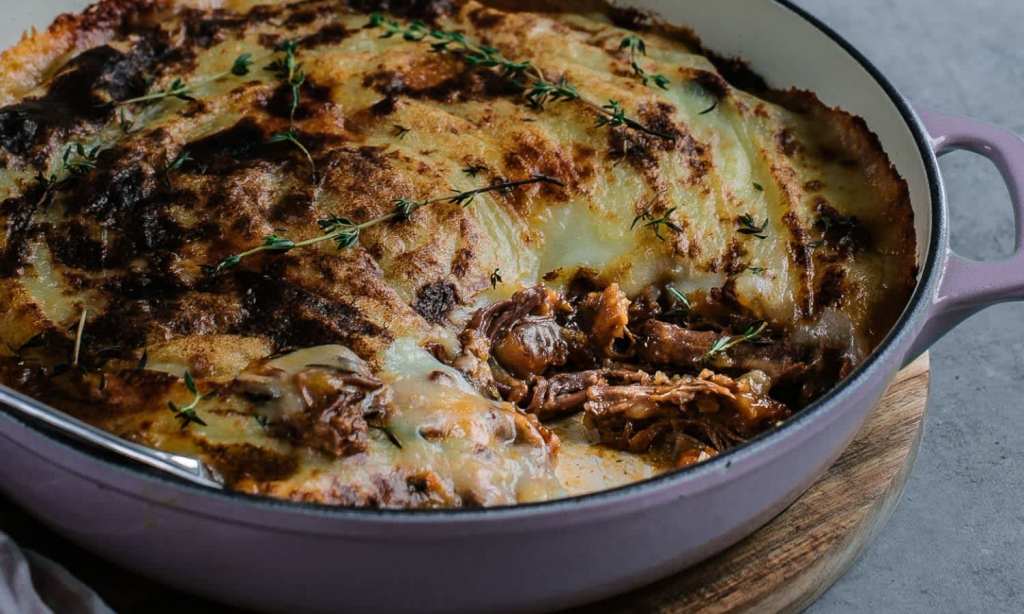Not only does this week mark Sleep Awareness Week, but it’s also Coeliac Awareness Week. Coeliac disease impacts 1 in 70 Australians — yet 80% of people with the disease don’t know they have it. It’s safe to say, like gluten-free chef and cookbook author, Helen Tzouganatos did, that “It’s widely unknown and underrepresented”.
So how can we make sure the disease — that’s often just confused with gluten-intolerance — is known and represented? Firstly, we can talk to those who have coeliac disease. We can even take it one step further. Yep, that involves talking to those who actively take part in — well, not curing the disease, as there is no cure — but reducing the side effects of it. People like the aforementioned Tzouganatos.
Diagnosed at 32 (something she calls “an unexpected shock”) she found that all dietary options available were “incredibly bland, unappetising, or hard to get”. So, she took it upon herself to create meals that anyone could make — including a kitchen-newbie, gluten consumer. As she says, “Coeliac disease didn’t have to be the end-all or be all.”
If you’ve come here, and you’re still confused by the fact coeliac disease and gluten-intolerance aren’t in fact, one and the same, Tzouganatos is here to educate you.
“Coeliac Disease is an autoimmune disease that causes damage to the lining of the small intestine when gluten is consumed, causing people to feel bloated, nauseous, lethargic, or even face extreme weight loss/gain,” she explains. The immune system can actually attack its own lining. Painful is an understatement.
Where gluten intolerance “is not an autoimmune disease, and will not cause life-threatening complications.” It may cause adverse symptoms — similar to coeliac disease — but it’s only short-term until the gluten is cleared from the body.
The impact? “For those with Coeliac Disease or gluten intolerance, it means we need to be more careful and diligent about what we put into our bodies.” That means nothing with grains — wheat, rye, barley. Translation? No cake, bread, or pasta.
It is getting better, according to Tzouganatos, as “gluten-free alternatives are now readily available more than ever, [and] lots of venues and brands are accommodating”. One of the things she missed the most, that she’s able to enjoy now? “Beer.” Specifically, Wilde Gluten-Free Beer.
Other GF alternatives? Tapioca flour (“perfect for baking, crumbling, putting in sauces”), and Tamari sauce (“a great alternative to soy sauce”).
Her favourite GF meal to make? A slow-cooked braised beef pie, with Wilde GF Pale Ale beer. And yes, you can find the recipe below; just in time for Coeliac Awareness Week.
☆ Beer & Beef Brisket Pie With Olive Oil Mash – Gluten and Dairy Free
Braised Beef
- 1kg beef brisket, cut into 5cm chunks
- Sea salt flakes and cracked pepper
- 2 tablespoons tapioca flour
- 4 tablespoons extra virgin olive oil
- 1 large brown onion, peeled and chopped
- 1 celery stalk, chopped
- 4 garlic cloves, crushed
- 3 fresh bay leaves
- 1 tablespoon fresh thyme leaves
- 1 tablespoon rosemary leaves, finely chopped
- 2 tablespoons tomato paste
- 500ml beef stock
- 1 x 330ml bottle Wilde Gluten Free Pale Ale Beer
Olive Oil Potato Mash
- 1kg Sebago potatoes, peeled and cut into 4cm cubes
- ¼ cup extra virgin olive oil
- Pinch of sea salt flakes
Method:
- Preheat a fan-forced oven to 170°c.
- Season beef brisket with salt and pepper and dust with tapioca flour.
- Heat a heavy-based saucepan over med-high heat. Add half the oil and sear beef in batches for a few minutes on each side until evenly browned. Set beef aside in a bowl.
- Add remaining oil to the pan along with onion, carrot, celery, and a pinch of sea salt. Cook for 8 minutes until the vegetables have softened. Add garlic, bay leaves, thyme, rosemary, and tomato paste and cook for a further 30 seconds.
- Return beef to the pan with any resting juices and pour in stock and Wilde beer. Cover pan with a tight-fitting lid, transfer to oven and cook for 3 hours or until beef is tender.
- Whilst the beef is braising, prepare the potato mash. Add potato cubes to a pot of cold salted water and bring to a simmer. Cook for 20 minutes or until potatoes are tender. Drain potatoes and transfer to a bowl or processor. Add olive oil and mash or pulse to combine. Adjust seasoning with extra salt as required. Set aside.
- Remove saucepan from oven and increase heat to 200°c. Shred beef with 2 forks and adjust seasoning with extra salt or pepper if required. Transfer saucy beef to a baking tray or casserole dish and top with potato mash. Return to oven and bake for 30 minutes or until golden.
Read more stories from The Latch and subscribe to our email newsletter.







